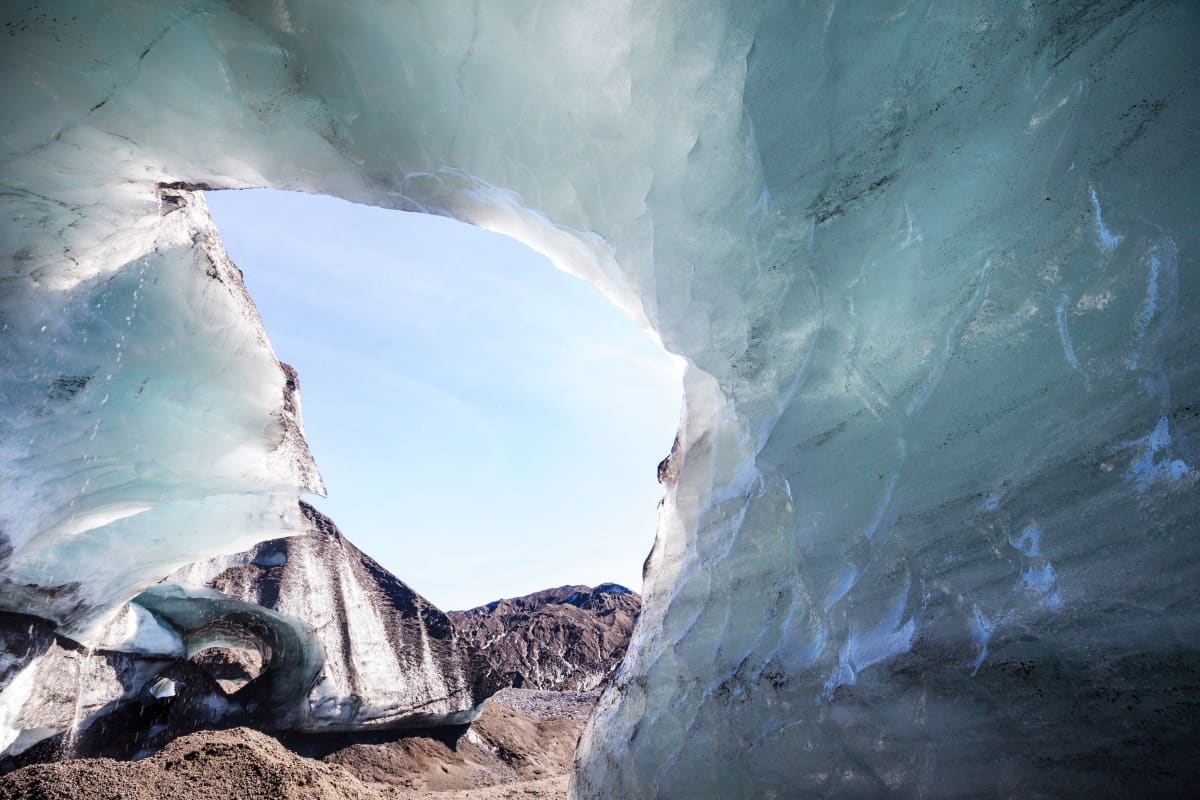You’ve probably wondered why bears go into caves to hibernate during the winter. While there may be some truth to the assumption that it makes it hard for hunters to find them while they are sleeping, the most pertinent reason is that caves retain a consistent temperature year-round, allowing them to sleep through the scarce winter months without freezing to death.
Why do caves stay at the same temperature year-round? Caves stay at the same temperature year-round because they are thermally insulated from the external substances that flow into them. The temperature of the air and liquids that flow into caves has little impact on the crust that forms the cave, which has a much larger thermal capacity than liquid or air.
While there are some exceptions that may make the cave seem warmer or colder than expected, such as depth of the cave, distance from the mouth, and number of openings into the body of the cave, it can generally be accepted that a cave will retain a yearly temperature about equal to that of the average annual surface temperature of the region in which it is located.
Why Do Cave Temperatures Stay the Same?
When trying to figure out why cave temperatures stay the same year-round, it is important to have a thorough understanding of a couple of important concepts: geothermal energy and insulation.
Geothermal Energy
Geothermal energy, in this case, can be described as stored solar energy that is trapped and retained in the dirt and rocks that surround a cave. Due to the large thermal capacity (ability to retain heat) of the earth, it is able to trap and hold the sunlight that increases the surface temperature of a region during the hotter months.
This storage of geothermal energy keeps the cave at a cool, comfortable temperature, even when the temperature at the surface is bitterly cold, as the cold air is not able to offset the massive amounts of heat trapped in the walls of the cave.
When thinking about how geothermal energy works to keep the temperature of a cave the same year-round, it is helpful to consider basements and cellars. These are human-made structures, dug into the ground and added to homes that serve essentially the same function as a naturally occurring cave.
Basements are a great place to hang out when the temperatures outside become extreme, and cellars keep products such as wines and canned goods from going bad due to severe heat or freezing. The ground from which basements and cellars are dug retains the solar energy trapped from the sun, keeping these additions comfortable in the most extreme of conditions.
Insulation
Another important, closely related concept to geothermal energy is the idea of insulation.
Insulation can best be thought of as a layer of mass or tissue that protects an inner structure from outside elements.
When building a house, carpenters may add insulation to the interior of walls, using a material that is effective at absorbing extreme heat and cold and preventing them from permeating the interior of the building. In addition, hydro flasks have become popular because they are effective at insulating cold water from the warmth of the drinker’s hand.
As it has been mentioned that the earth is highly effective at absorbing the sun’s heat in the form of geothermal energy, the dirt and rocks form a naturally occurring insulation for the interior cave. There is simply no way that hot or cold liquid or air can penetrate the insulation formed from mountains and ground, keeping the temperature of the cave constant.
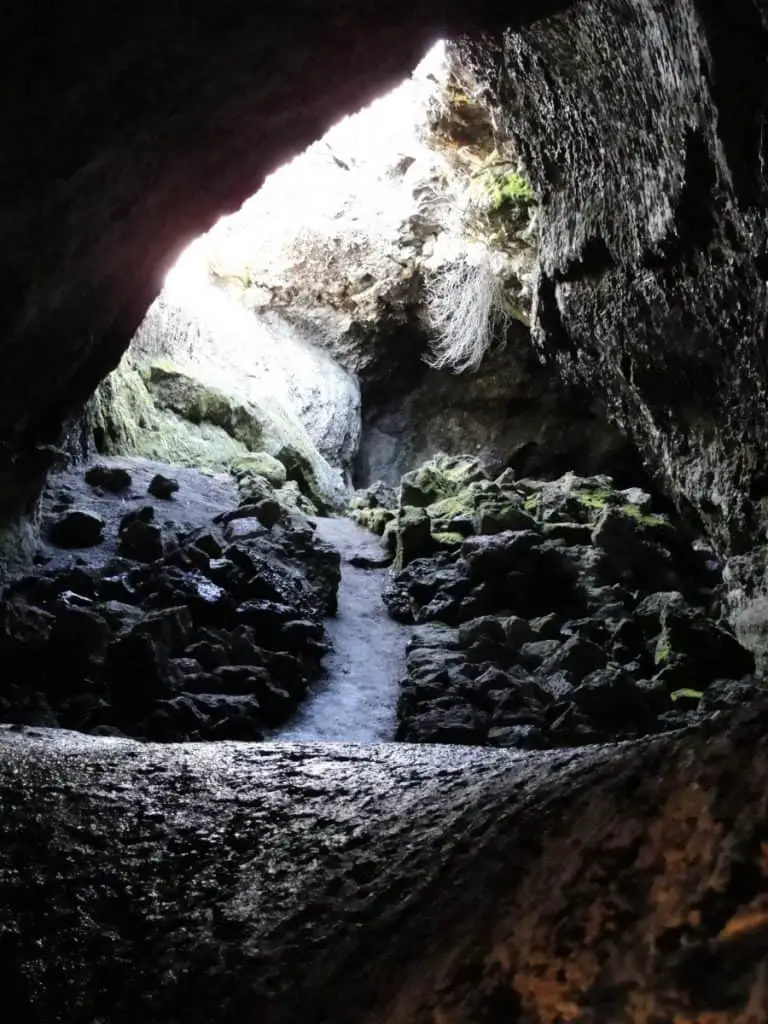
Factors that Can Influence the Temperature of a Cave
It is widely accepted that the temperature of a cave will remain consistent all year round, holding close to the average surface temperature of the region in which it is located (most likely somewhere between 50°F and 70°F).
However, there are a handful of situations that may make this assumption seem inaccurate and should be considered when assessing cave temperature.
Distance from the Mouth
The temperature inside a cave will more closely reflect that of the surface near the mouth of the cave. Generally, the cave’s capacity to insulate is not maximized until it extends several meters into the earth. Therefore, if it is bitterly cold outside, and you are just inside the mouth of the cave, you are likely to still feel cold as well, despite being “inside the cave.”
It is also important to remember, if you feel like the temperature inside a cave is not comfortable, that you may not be in a cave at all. A cave is a hollow space underground or on the side of a mountain that usually has some kind of passageway leading to its depths. They are typically formed when underground acidic waters wear away at softer stones or by natural disasters.
As caves need to extend several meters into the earth to maximize their thermal and insulating capacities, a hollow without a passageway may incorrectly be referred to as a cave. Shallow holes, rock overhangs, and cliff ledges will provide some protection from nature’s elements, but they are not caves in the strictest sense and will likely maintain close to surface temperature.
Number of Openings
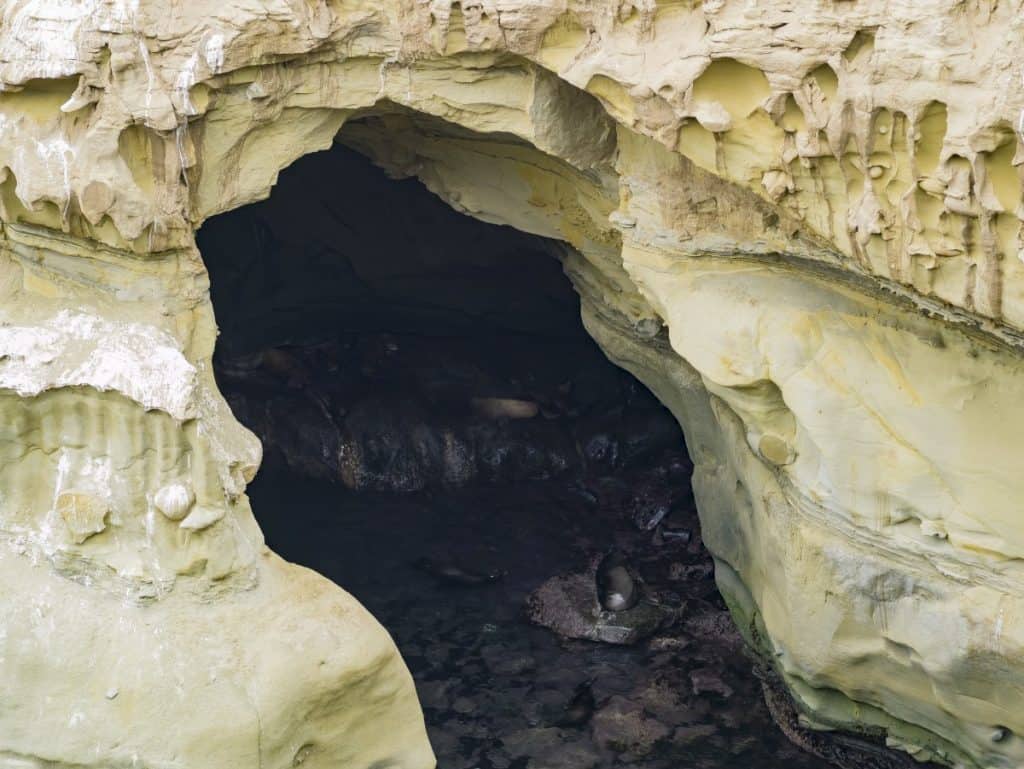
Caves with more than one opening are much more likely than single-mouth caves to experience changes in temperature. These caves are susceptible to drafts and convection currents, which will allow the cave to approach the temperature of the outside surface.
If there is a difference in height between the mouths of the cave, an air circulation pattern will commence. In warmer weather, the cold air will sink, escaping through the lower mouth of the cave, while the warm air is sucked in from the outside world through the upper opening.
In wintry weather, the reverse will happen, with cold air being sucked in from the surface through the lower opening, while heat escapes through the upper mouth.
As you can see, these drafts and convection currents make it less likely that caves with multiple openings will maintain a constant temperature year-round.
A cave with a single mouth, however, behaves much differently and will exhibit the expected temperature-maintaining properties. As cold air seeps its way into the mouth of the cave and meets the geothermal energy stored in the cave’s walls, the change in barometric pressure will cause the cave to “burp,” expelling the cold air back out of the opening from which it came.
As the single-mouth cave is sheltered from the outside weather patterns and not susceptible to drafts or convection currents, the temperature deep within a cave can vary as little as .5°F over the course of a hundred years.
Depth of the Cave
While we have said that the thermal and insulating capacities of a cave cannot be maximized until several meters from the mouth of the cave, extremely deep caves may also have temperatures inconsistent with what one would expect.
The Earth’s core is extremely hot, and the closer you get to the core, the more likely it is that you will feel the effects of this heat. The exact statistic varies among geologists, but it is believed that the temperature of the earth increases by about 15°F for each mile dug.
Therefore, if you stumble on a cave that extends hundreds of meters toward the Earth’s core (and you’re brave enough to keep going deeper!), then you are likely to be met with some uncomfortably hot temperatures the deeper you get.
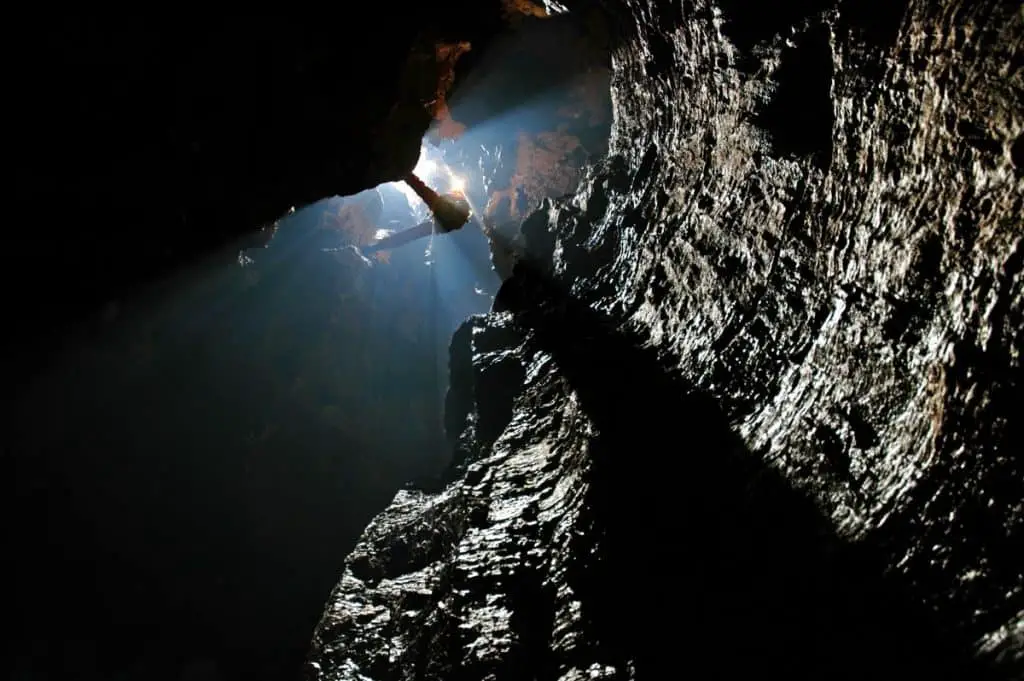
Practical Uses of Caves Staying the Same Temperature Year-Round
We have already established that bears utilize the cozy confines of caves during their winter hibernation periods. People can follow the example of their furry friends, as there are multiple ways in which people can use caves and cave-like properties to their benefit.
Recreation
There are various ways in which people can enjoy the amazing features of caves.
- Spelunking – this is the exploration of caves as a hobby or pastime. Spelunkers may enjoy the amazing geological structures, such as ice formations, stalagmites, and stalactites, that are found in many caves, such as New Mexico’s Carlsbad Caverns
- Caving – while some consider “caving” and “spelunking” synonymous, (Spelunking vs Caving) caving is generally considered more competitive than spelunking. Spelunking is regarded as more of a tourist activity, whereas caving is a specific subcategory where those experienced in cave exploration compete in predetermined challenges
- Speleology – this is the scientific study of caves. While many forms of geological study are weather dependent, caves can be studied throughout the year and can lend many useful insights into the properties of the Earth
- Camping – a favorite activity for many outdoor enthusiasts. However, many camping trips have been spoiled by weather that will not cooperate. States that are notorious for getting hot and humid in the summer, such as Kentucky and Tennessee, contain hundreds of caves that can offer cool summertime hangouts for outdoors people
A Safety Checklist for Caving
Whatever the motivation for exploring caves, it is essential that proper safety precautions are in place before entering and setting up shop. While caves can provide cool, comfortable quarters from the outside world, it is important to remember, as with all things forming from nature, that accidents can happen fast and be unpredictable. Consider the following checklist:
- Scout the area – is the mouth of the cave going to stay open? If snow falls, is it likely to block the path to the outside world? If the cave enters into the side of a mountain, what are the chances of rockslides, mudslides, and/or avalanches? Unless you find yourself in immediate need of shelter, it’s best to scout prospective caves and then return later
- Tell your friends – let your friends and family know that you’re planning to check out some caves. Give them the precise location (GPS coordinates are preferable) and let them know your expected departure and return times
- Look for wildlife – despite their comfortable temperatures; there aren’t many animals that inhabit the depths of caves. Bats are obvious, as are hibernating bears and some insects, but most land animals only visit the entrance of a cave for temporary shelter. Still, you should check for any dangerous beasts, especially snakes at the entrance
- Pack your tools – it may seem inconvenient, especially if you have scouted the area and see no threat of a mouth blockage, but any time you enter a cave, you’re going to want to be ready to move some earth. A shovel is a minimum, but picks, axes, hammers, and chisels are all recommended. You can check out my Recommended Gear here
- Light a fire – not only does the temperature stay the same all year in a cave, but so does the time of day–it’s always dark! Be sure to have plenty of materials for building a fire, as well as ample battery power/propane in the event that alternate light and heat sources are needed
- Have plenty of food – not only should you pack enough to eat for the duration of your expected stay, but you should take a reserve supply with you in case of an emergency. Plan your reserve food supply based on how long you would project location and rescue efforts to take
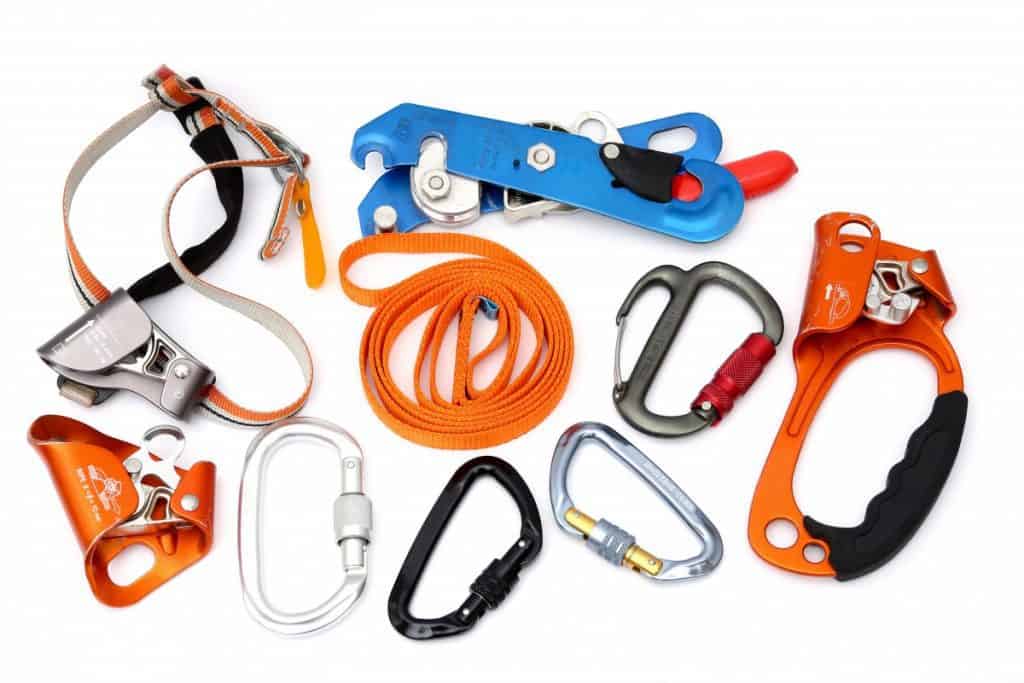
Habitation
Many people may think that hobbit holes are a figment of J.R.R. Tolkien’s imagination. However, while never overly prevalent, underground dwellings have been scattered across civilizations throughout history.
While the term “caveman” is often thought of as a pejorative, early homo sapiens and indigenous people discovered the advancement of using caves to make comfortable homes. Some communities have tried to re-create the benefits of cave living, as seen by the many different inner-earth and underground structures that people have utilized over the years.
- Dugouts (constructed caves) – these are a form of human-made cave in which machines tunnel toward the desired subterranean location, and earth is cleared to form living quarters. While these structures most closely mirror the benefits of tunnel living, they can often be quite a time consuming, costly, and dangerous to construct
- Earth berm – this is the practice of partially burying a house, with one side of the structure out in open air to allow for ventilation and solar contact. The subterranean walls often have to be reinforced to support the increased weight of the heavy soil, but residents are able to save significantly on heating and cooling costs
- Culvert – concrete is used to form a precast home above ground, and the structure is then “planted” into the ground. Some people call this method “cut and cover.”
- Shafts – very wide shafts can be constructed and then inserted into the ground. Multiple stories and floors would then be added into the shaft, creating an underground, apartment-like atmosphere
- Tunnels – in many urban civilizations, homeless seek refuge in underground tunnels
In addition to the increased insulation, which leads to lower heating and cooling costs, there are a number of other benefits to calling a cave-like residence home.
- Disaster resistance – as mentioned in an earlier section, there can be some added risks in hanging out in a cave. However, living subterranean also eliminates or mitigates some of the risks homeowners have to insure against when living above ground, such as tornadoes, fires, and vandalism
- Quiet – not only does the Earth’s crust insulate against extreme heat and cold, but it also insulates against loud noises. Getting woken by early-morning traffic or late-night college parties are not problems subterranean dwellers have to worry about
- Unobtrusive – as the Earth’s surface gets more and more crowded with buildings, living underground can help wide open spaces stay free and picture-perfect skylines remain unobstructed

Heating and Cooling of Buildings
Even if you don’t necessarily feel like living in a cave full-time, it is still possible to take advantage of the favorable temperatures found underground. The following simplistic example demonstrates how geothermal heating and cooling can be used to provide cheap, environmentally-friendly heating and cooling to buildings.
- Install pipes – a series of pipes are extended several meters underground
- Add fluid – a fluid is introduced to the pipes and circulated underground. In cold temperatures, the warmer underground fluid is pumped back into the building, while the opposite occurs in warmer weather
- Convert liquid to gas – once above ground, the liquid is converted to gas and permeated throughout the building to achieve the desired temperature
While there are start-up costs to getting this system installed, with some electricity required to pump the fluid from underground into the building and to pressurize the liquid to convert it into gas, the majority of the heating and cooling is done below ground, which will save the building owner money in the long run.
Caves Are Consistent Climates
Amazingly, the depths of a cave hold a consistent temperature year-round over many hundreds of years. In addition to being immune from severe weather events, the temperature of a cave remains largely static because of trapped geothermal energy and the natural insulation of cave walls.
When you’re ready to get started caving, be sure to read my Beginners Guide and check out my recommended gear section.

